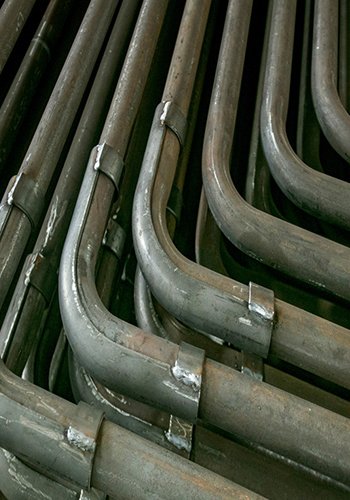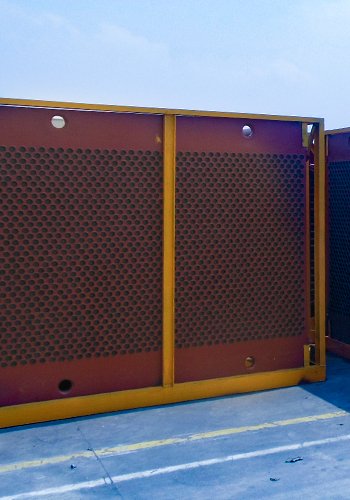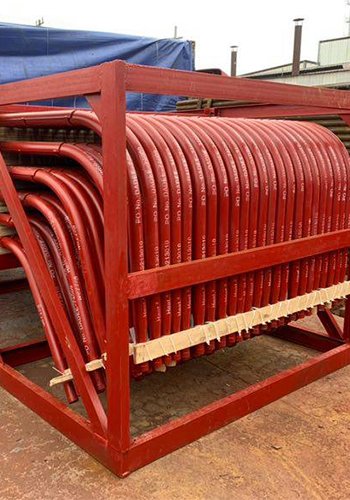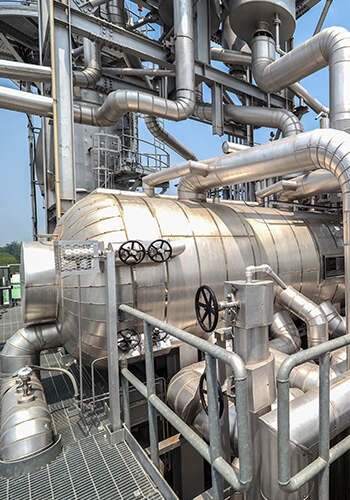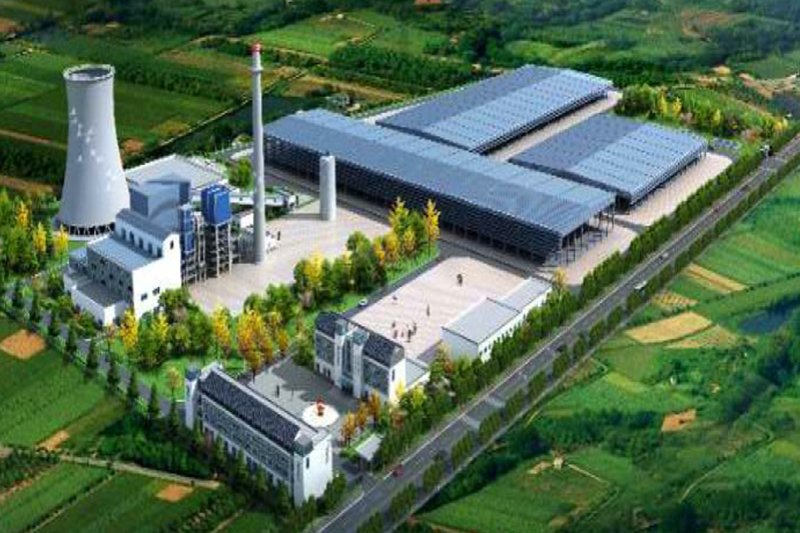In the realm of boiler and auxiliary equipment incidents, issues such as boiler damage and pipe bursts frequently take center stage. Among these occurrences, boiler pipe bursts are notably prevalent, constituting approximately 70% of overall accidents, particularly in coal-fired power plants. Within the spectrum of pipe bursts, water-cooled wall pipe bursts claim a staggering 80% share. The rupture of these pipes poses a significant threat, as it expels a substantial mixture of steam and water, disrupting the stable operational conditions of the boiler. This disruption not only leads to violent water level fluctuations but also jeopardizes the combustion environment, potentially resulting in severe consequences such as boiler fires.
The repercussions of a burst tube extend beyond operational challenges, often necessitating the unplanned shutdown of the furnace for mitigation. Each instance of non-stoppage incurs substantial financial losses, ranging from hundreds of thousands to millions of dollars. In more severe cases, such incidents may pose threats to personal safety. Therefore, understanding and addressing boiler burst tube accidents are paramount for plant and facility safety management.
Given the gravity of this issue, power plants must prioritize an in-depth analysis of the root causes and actively engage in the development of effective control measures. This proactive approach is crucial to ensuring the secure and uninterrupted operation of the boiler system.
1. Boiler Tube Failures: Enhancing Safety and Stability
Boiler tube failures represent a significant concern, particularly when it comes to the main furnace components such as the coal economizer, water-cooled wall, superheater, and reheater tubes. Take, for instance, the 2X600 MW coal-fired generating unit with the SG-2027/25.4 M970 model, operating under supercritical parameters and variable pressure conditions with a spiral coil DC furnace.
In this context, water-cooled wall leakage emerges as a predominant issue, constituting approximately 80% of all boiler leakage accidents in the power plant. Such a high incidence rate poses a serious threat to both plant safety and the normal functioning of the boiler system. In order to mitigate the frequency of water-cooled wall leakage incidents and bolster overall operational safety, a comprehensive analysis of the root causes becomes imperative.
The subsequent exploration delves into a thorough examination of several common causes leading to boiler water-cooled wall leakage. This analytical approach aims to provide valuable insights and research findings, facilitating effective measures to ensure the secure and stable operation of the power plant.
2. Main Causes of Pipe Burst in Boilers: A Comprehensive Analysis
2.1 Poor Boiler Feed Water Quality and Water-Cooled Wall Tube Overheating
One of the primary factors contributing to pipe burst incidents is the poor quality of boiler feed water, leading to scaling and over-temperature conditions in water-cooled wall tubes. Water characterized by a higher concentration of calcium (Ca), magnesium (Mg), and other minerals is commonly referred to as “hard water.” The process of eliminating or reducing calcium and magnesium ions in water is known as water softening. The recommended hardness level for steam boiler feed water is generally less than or equal to 0.03 mmol/L.
As boiler feed water undergoes multiple cycles of evaporation, calcium bicarbonate (Ca(HCO3)2) and magnesium bicarbonate (Mg(HCO3)2) originally dissolved in water decompose during boiling. This decomposition results in the formation of insoluble compounds, primarily calcium carbonate (CaCO3) and magnesium hydroxide (Mg(OH)2), occasionally accompanied by magnesium carbonate (MgCO3). The chemical reactions are expressed as follows:
- Ca(HCO3)2 → CaCO3 (precipitate) + CO2↑ + H2O
- MgCO3 + H2O → Mg(OH)2 (precipitate) + CO2↑
Over time, the concentration of these insoluble salts gradually reaches saturation at specific temperatures. Consequently, calcium and magnesium ions form precipitates, manifesting as flocculent white impurities on the inner surface of water-cooled wall pipes.
As the concentration of impurities on the water-cooled wall increases, white solid precipitates (usually crystals) may form in the water solution. If these precipitates do not adhere to the heated surface and remain suspended in the water, they are termed dregs or slag. However, if the crystallization process occurs on the heated surface, involving impurities like carbonates, colloids, bacteria, and organic matter, a hard scale is formed and firmly adheres to the heated surface—referred to as “Scale.”
Scale, akin to a stone wall, acts as a barrier between the steel tube and vapor. The intense furnace flame can cause the steel tube to turn red, compromising its strength. If the scale develops cracks, water leaks onto the high-temperature steel tube, rapidly evaporating and generating increased pressure inside the boiler tube. This pressure surge can lead to bulging or burst pipe accidents in the water-cooled wall tubes.
Moreover, scale exhibits poor thermal conductivity, diminishing the heat transfer efficiency of the heating surface. This results in increased exhaust temperatures, higher heat loss in exhaust smoke, reduced boiler thermal efficiency, and heightened risks of boiler burst or even explosion due to thermal expansion, contraction, and uneven forces causing damage to the boiler heating surface.
2.2 Water-Cooled Wall Wear and Thinning: Implications for Steel Tube Integrity
A recurring issue in boiler systems involves wear and thinning of the water-cooled wall, resulting in a reduction in steel tube strength and the potential for cracking. Wear tends to be concentrated in specific areas such as the burner outlet, furnace outlet, and observation holes of water-cooled wall tubes. An illustrative example is observed in a Shanxi power plant, where the water-cooled wall wear conditions for the #4 furnace are detailed in Table 1.
Table 1: Water-Cooled Wall Tube Wall Thickness Inspection Record of Shanxi Power Plant #4 Furnace
| Inspection Points | Design wall thickness /mm | Wall thickness after wear/mm | Thinning rate /% | Conformity |
| 1 | 5.5 | 3.3 | 40 | No |
| 2 | 5.5 | 3.7 | 32.7 | Yes |
| 3 | 5.5 | 3.9 | 29.1 | Yes |
| 4 | 5.5 | 3.4 | 38 | No |
Boiler tube wear and water-cooled wall tube wear can be attributed to various factors, each contributing to the overall degradation of system integrity. The analysis of these causes is presented below:
- Boiler Tube Wear:
- Ash Particle Impact: Wear in boiler tubes is primarily induced by the impact of ash particles, which are prevalent in the combustion process. These abrasive particles, combined with the flow of pulverized coal gas, lead to significant scouring on the tube surfaces.
- Improper Soot Blower Operation: When the soot blower malfunctions or operates inadequately, it results in ineffective removal of ash and particles from the tube surfaces. This inefficiency exacerbates wear over time.
- Air Leakage and Fluid Scouring: Unwanted air leakage into the boiler system, coupled with fluid scouring, contributes to accelerated wear on boiler tubes.
- Deflection of DC Burner Cut Circle: The deflection of the DC burner cut circle can lead to uneven distribution of coal particles and combustion gases, causing localized wear on the tubes in affected areas.
- Water-Cooled Wall Tube Wear:
- Poor-Quality Pulverized Coal Combustion: The use of substandard pulverized coal with larger particle sizes results in high kinetic energy and rapid flow of particles. This leads to severe scouring on the water-cooled wall, causing the stripping of trace metals and subsequent thinning of the tube wall. Higher concentrations of coal ash intensify the wear and contribute to water pipe leakage over time.
- Structural Issues in Boiler Construction: Some power plants face wear issues due to structural problems within the boiler. Non-compliance with assembly regulations, including weld overlap and uneven installation, results in wall roughness, making water-cooled wall tubes susceptible to serious wear. General circulating fluidized bed boiler water-cooled wall tubes exhibit a general wear phenomenon, but the annual wear is typically small and uniform.
- Improper Burner Installation or Damage: Wear can occur due to improper installation or damage to the burner, resulting in wear around the burner area. The coal powder content in the primary wind powder mixture is crucial, and if the burner installation angle deviates from specifications, high-speed scrubbing of the water-cooled wall occurs, leading to wear and thinning. A notable incident in June 2017 at a Shanxi power plant, as illustrated in Figure 1, exemplifies severe water-cooled wall wear and thinning, resulting in leakage.
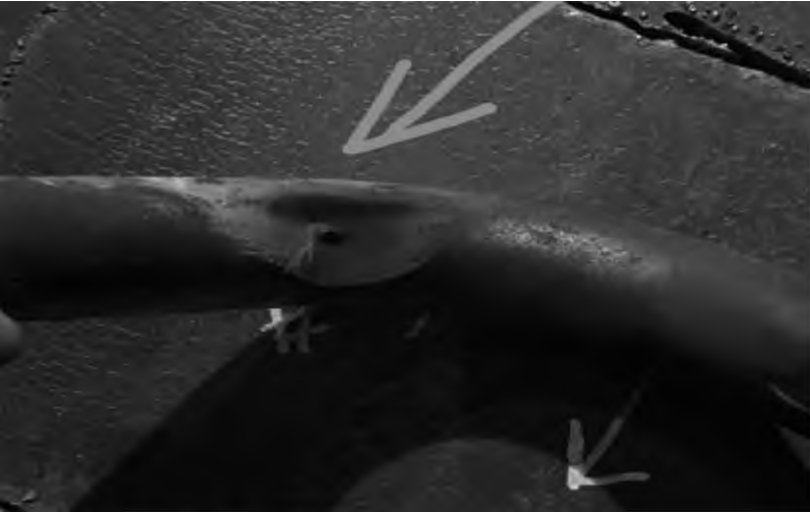
Figure 1: Water-Cooled Wall Leakage Incident – Cut Section of Leaking Tube
The visual representation in Figure 1 vividly illustrates the severity of water-cooled wall wear, showcasing significant thinning and resulting leakage. This emphasizes the critical importance of addressing wear-related issues to prevent potential accidents and ensure the continued integrity of the boiler system.
2.3 Steam and Water Circulation Failure: Causes and Consequences
The failure of steam and water circulation within a boiler can have severe repercussions, particularly culminating in over-temperature burst tubes. When the flow direction or rate of the vapor mixture’s evaporation on the heating surface deviates from the designed parameters, leading to issues such as stagnation, backflow, or an irregular free water level, it is termed as water cycle anomaly.
This anomaly results in the irrational distribution of steam, causing the destruction of the water film on the heated surface. Consequently, the affected metal does not receive timely cooling, leading to temperatures surpassing the allowable operating limits. This over-temperature condition induces changes in the metal’s organizational structure, weakening its mechanical properties.
The consequences of steam and water circulation failure include:
- Reduced Material Strength: The elevated temperature weakens the material’s strength, diminishing its ability to withstand internal pressure within the pipe.
- Decreased Plastic Deformation Capacity: The increase in temperature reduces the pipe’s plastic deformation capacity, making it more susceptible to deformations such as bulging, expansion of roughness, and bursting.
- Structural Changes: Over-temperature causes alterations in the pipe’s metal organization, rendering it structurally compromised.
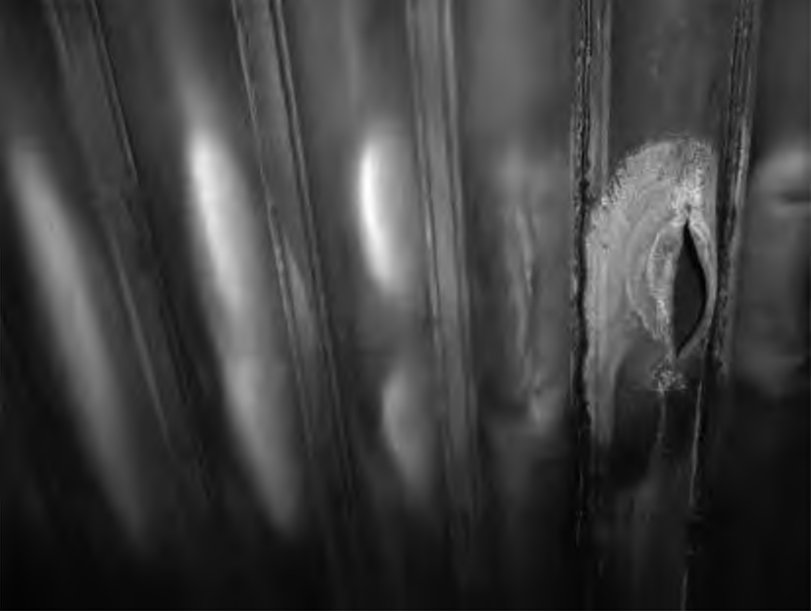
Figure 2: Consequence of Steam and Water Circulation Failure – Burst Tube Leakage
The visual representation in Figure 2 illustrates the aftermath of steam and water circulation failure, showcasing a burst tube leading to leakage. It highlights the critical importance of maintaining proper steam and water circulation to prevent over-temperature conditions and subsequent structural failures within the boiler system. Regular monitoring and adherence to design parameters are essential to ensure the safe and efficient operation of the boiler.
2.4 Impact of Poor Furnace Pipe Welding on Pipe Bursting
In the Shanxi power plant’s 600 MW boiler using T22/13Cr Mo44 steel, high-quality welding is crucial. Poor welding or defects can lead to welding cracks, especially in concentrated weld joint areas. Frequent boiler start-ups increase stress, causing metal fatigue and a higher risk of steel pipe failure. Welding cracks under high-temperature, high-pressure conditions pose a serious threat, leading to potential water-cooled wall leakage and compromising boiler integrity. Regular inspections and adherence to high welding standards are essential for ensuring safe and reliable boiler operation.
2.5 Water-Cooled Wall Corrosion
2.5.1 Corrosion under Tube Scale:
The water-cooled wall tubes are naturally coated with a protective Fe3O4 film. This film is most stable when the furnace water’s pH is within the range of 9 to 10, resulting in minimal tube corrosion. However, when the pH exceeds the standard, the protective film is compromised. At higher temperatures, NaOH reacts with Fe3O4, leading to the formation of NaFeO2 and Na2FeO2, accompanied by the release of H2. Additionally, NaOH combines with carbon to form methane (CH4), causing decarburization in steel. The accumulation of methane in grain boundaries creates internal pressure, leading to intergranular cracking and eventual tube rupture.
2.5.2 High-Temperature Corrosion Outside the Pipe:
At elevated temperatures, sulfur plays a role in various corrosion processes. Combustion of poor-quality coal with high sulfur content (above 1.2%) releases corrosive gases like CO, H2, and H2S. The reaction between sulfur and metal (Fe + S → FeS) induces high-temperature corrosion on the pipe wall. In the flue gas side of the water-cooled wall, where temperatures reach around 420 ℃, metals are susceptible to strong high-temperature corrosion.
3 Effective Measures to Prevent Boiler Water-Cooled Wall Leakage
Through the analysis of the causes of boiler water-cooled wall leakage, it is evident that addressing the issue requires focused attention and tailored preventive measures. The following measures are recommended:
3.1 Water-Cooled Wall Scaling Treatment Measures
3.1.1 Boil and Pickling:
Boiling and pickling serve to eliminate rust, grease scale, and impurities accumulated during the boiler’s manufacturing, transportation, and installation. This process not only cleans the system but also ensures that water vapor meets quality standards at the initial stages of ignition.
3.1.2 Improve the Quality of Feed Water:
Maintain strict control over boiler water quality by reducing water hardness to meet industrial standards (GB1576). Methods include:
- Ion Exchange: Utilize sodium ion exchange resin to replace calcium and magnesium ions with soft water.
- Reverse Osmosis: Employ selective membrane separation to extract fresh water and remove solutes.
- Furnace Dosing Chemical Treatment: Introduce trisodium phosphate to prevent scale production by generating loose and precipitated phosphate residue, discharged through regular sewage.
Additional Measures:
- Conduct regular sampling and testing of the vapor system to ensure compliance with water quality standards.
- Implement continuous sewage to maintain low salinity in the furnace water, preventing salt accumulation.
- Perform regular sewage discharge to remove impurities and prevent clogging of water-cooled wall pipes, especially during equipment failures or imperfect water treatment.
Improving the quality of boiler feed water not only reduces the risk of water-cooled wall leakage but also enhances overall boiler efficiency and longevity. Regular monitoring, maintenance, and adherence to water quality standards are essential for effective prevention.
3.1.3 Ensuring Tightness of Steam Equipment and Piping
Ensuring the tightness of steam equipment and piping is crucial in preventing water quality issues that can lead to scaling. When leakage occurs in steam equipment or pipelines, cooling water or impurities may infiltrate the steam condensate water, causing an increase in calcium and magnesium salts, a significant contributor to scale production. Therefore, if there is a noticeable rise in water hardness in steam equipment or boiler feed water, prompt inspection and rectification of any leaks in the steam equipment or piping are essential to maintain water quality standards and prevent scale formation.
3.2 Prevention of Wear and Leakage
To prevent wear in water-cooled wall tubes, several measures can be implemented:
- Improve Coal Powder Quality: Enhance the quality of coal powder to control wear. Maintain the particle size of coal powder (R90) between 10% to 13% and prevent excessively large particle sizes.
- Remove Slag Near Burner Nozzle: During operation, promptly remove slag near the burner nozzle to prevent wear.
- Sticker Welding or Anti-Wear Tile Installation: Apply sticker welding or install anti-wear tiles on wear-prone areas of the tube. Short steel or anti-wear tiles provide better cooling, reducing the risk of burnout. Installing anti-wear tiles at water-cooled wall corners has proven effective in preventing wear-related leakage, particularly in power plants facing recurrent incidents.
3.3 Prevention and Control of Over-Temperature Leakage
To prevent over-temperature pipe burst and associated failures:
- Ensure Fuel Supply Uniformity: Maintain uniform fuel supply to achieve stable combustion and a well-balanced aerodynamic field in the furnace.
- Optimize Burner Operation: Adjust the flame center position to avoid wall-to-wall combustion and prevent excessive temperatures in the burner area.
- Control Boiler Operating Load: Avoid operating loads that are too high or too low to prevent over-temperature conditions on the heated surface.
- Optimize Water-Cooled Wall Design: Design water-cooled wall pipes with an appropriate diameter and avoid excessive parallel tubes in a group. Ensure a reasonable combination of tubes and increase the cross-sectional area of drop tubes.
- Utilize Internal Threaded Tubes: Employ internal threaded tubes to create a disturbed boundary layer and rotation, enhancing heat transfer efficiency.

Figure 3: Internal Threaded Tubes for Improved Heat Transfer
3.4 Preventive Measures for Poor Quality Furnace Pipe Welding
To address poor quality furnace pipe welding and prevent related issues, the following measures are recommended:
Optimal Bevel Angle Usage:
- In the welding process, adhere to the allowable scope for the use of a small bevel angle as much as possible. This helps in achieving better welding results.
Pre-Heating Before Spot Welding:
- Before initiating spot welding, conduct pre-heating to raise the temperature appropriately. This pre-heating step contributes to improved welding performance.
Two-Person Symmetrical Alternating Welding:
- Employ a two-person symmetrical alternating welding approach. This involves two individuals uniformly and alternately conducting welding. This method ensures a certain level of temperature assurance between different weld layers and minimizes welding stress, reducing deformation. It helps avoid angular deformation issues associated with welding.
Seam Gap Control:
- Maintain a seam gap of less than 4 mm between the pipe row pieces, including the pipe row piece to the mouth of the seam and mouth sealing. This adheres to regulations and ensures proper alignment.
Radiation Flaw Detection:
- After completing the welding work, conduct 100% radiation flaw detection. Aim for a pass rate of at least 95%. Any welds found to be unqualified should be rewelded. This step serves as an effective control measure for the overall installation size of the pipe row, ensuring compliance with quality standards.
Implementing these preventive measures enhances the quality and reliability of furnace pipe welding, contributing to the overall integrity of the boiler system. Regular quality checks and adherence to welding standards are essential components of these preventive practices.
4 Conclusion
The boiler, being the central equipment in power plants and enterprises, holds significant importance as its quality directly impacts economic and environmental outcomes. Furnace tube bursts can result from various factors, often occurring in combination, necessitating comprehensive preventive measures. To prevent such incidents, installation, operational management, and regular inspections are crucial.
In addition to traditional approaches, employing advanced technologies such as high-fidelity three-dimensional models of boilers, coupled with real-time monitoring systems, enhances the understanding of the boiler’s status. This allows for better control and management of potential risks. A real-time monitoring system collects historical data, enabling the identification of leakage occurrences and trend analysis.
Utilizing these technologies, the system calculates the remaining life of the boiler heating surface, providing insights for developing maintenance plans. This facilitates key inspection guidance services, effectively preventing, eliminating, or reducing incidents like water-cooled wall tube over-temperature pipe bursts and leakages. By embracing a holistic approach and integrating advanced technologies, power plants and enterprises can ensure the safety, reliability, and longevity of their boiler systems.
[Source] Zhang Qian, Analysis of causes and countermeasures of boiler water-cooled wall leakage
DHB Boiler
Discover The Superior Quality And Cutting-Edge Technology Of DHB Boilers. Explore Our Range Of Biomass Boilers, Waste Heat Boilers, And More. Take Your Industrial Operations To New Heights With DHB Boiler.
